| Srl | Item |
| 1 |
ID:
127829


|
|
|
|
|
| Publication |
2013.
|
| Summary/Abstract |
How are civilian attitudes toward combatants affected by wartime victimization? Are these effects conditional on which combatant inflicted the harm? We investigate the determinants of wartime civilian attitudes towards combatants using a survey experiment across 204 villages in five Pashtun-dominated provinces of Afghanistan-the heart of the Taliban insurgency. We use endorsement experiments to indirectly elicit truthful answers to sensitive questions about support for different combatants. We demonstrate that civilian attitudes are asymmetric in nature. Harm inflicted by the International Security Assistance Force (ISAF) is met with reduced support for ISAF and increased support for the Taliban, but Taliban-inflicted harm does not translate into greater ISAF support. We combine a multistage sampling design with hierarchical modeling to estimate ISAF and Taliban support at the individual, village, and district levels, permitting a more fine-grained analysis of wartime attitudes than previously possible.
|
|
|
|
|
|
|
|
|
|
|
|
|
|
|
|
| 2 |
ID:
100570
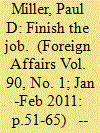

|
|
|
|
|
| Publication |
2011.
|
| Summary/Abstract |
Since 2001, Afghanistan's economy has grown at an impressive rate and major development indicators in the country have improved dramatically. Even security and the rule of law -- long neglected -- are now improving. Washington and its allies could still win in Afghanistan if they are given the time they need.
|
|
|
|
|
|
|
|
|
|
|
|
|
|
|
|
| 3 |
ID:
097268
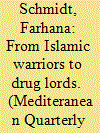

|
|
|
|
|
| Publication |
2010.
|
| Summary/Abstract |
The Taliban of today bears little resemblance to the original Taliban of the 1990s. Everyone from fighters loyal to various warlords to criminals involved in kidnapping and racketeering label themselves Taliban. This makes sorting out exactly who is who a difficult task. Nevertheless, one thing is abundantly clear: the active participation of the Taliban has aided and abetted opium cultivation on a scale unmatched by anything Afghanistan has seen in the past. Papaver soniferum, or poppy, is the lifeblood of the Taliban insurgency. Once the Taliban's financial arteries linked to the poppy are cut off, the insurgency will experience a major organizational blow, unless it morphs into an entirely new animal.
|
|
|
|
|
|
|
|
|
|
|
|
|
|
|
|
| 4 |
ID:
117737
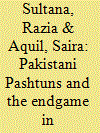

|
|
|
| 5 |
ID:
126295
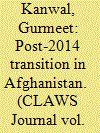

|
|
|
| 6 |
ID:
123982
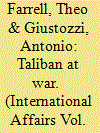

|
|
|
|
|
| Publication |
2013.
|
| Summary/Abstract |
In seeking to explain why and how the war in Afghanistan has dragged on, most analysis has focused on the western and Afghan government effort. This article examines how the war looks from the perspective of the insurgency. Using Helmand province as a case-study, the authors draw on a large number of original interviews with Taliban field commanders and fighters to produce a uniquely detailed picture of the Taliban at war.
In the first section, the article explores how the Taliban returned to Helmand from 2004 to 2006, and show how the British made the situation far worse when they deployed forces to Helmand in 2006. In the second part of the article the authors examine the evolution of the Taliban insurgency in Helmand since 2006. They show how the Taliban has developed an increasingly centralized organizational structure, a more militarized shadow government and greater professionalism of field units.
The overall picture that emerges is of a resilient insurgency that has adapted under immense military pressure. The Taliban have suffered very heavy attrition in Helmand, but they are far from defeated.
|
|
|
|
|
|
|
|
|
|
|
|
|
|
|
|
| 7 |
ID:
090785
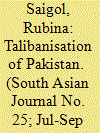

|
|
|
|
|
| Publication |
2009.
|
| Summary/Abstract |
This essay is an attempt to explore, and ultimately debunk, ten of the most common national myths that sustain the power of ruling classes through a monopoly of the means of ideology-production and control over the methods of violence.
|
|
|
|
|
|
|
|
|
|
|
|
|
|
|
|
| 8 |
ID:
131622
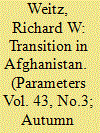

|
|
|
| 9 |
ID:
110317
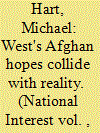

|
|
|
|
|
| Publication |
2012.
|
| Summary/Abstract |
THE WEST'S military engagement in Afghanistan is entering its eleventh year and has another two years to go before the end of combat operations in 2014. Whatever the result of the international conferences that began last year in Istanbul and Bonn to elicit support for a successor state, one thing is clear: after Western forces draw down, Afghanistan won't bear much resemblance to the Western vision that fueled the intervention in the first place.However effective Western military organizations are in transitioning to Afghan control, the country's future will not be decided primarily by the residual structures and legacies of Western involvement, the current Taliban insurgency or even any formal process of reconciliation. Rather, it will be decided more by the country's ethnic character, the particular nature of local and national governance, and the influence of neighboring powers with enduring geopolitical and strategic imperatives in the region far stronger than those of the West.
|
|
|
|
|
|
|
|
|
|
|
|
|
|
|
|